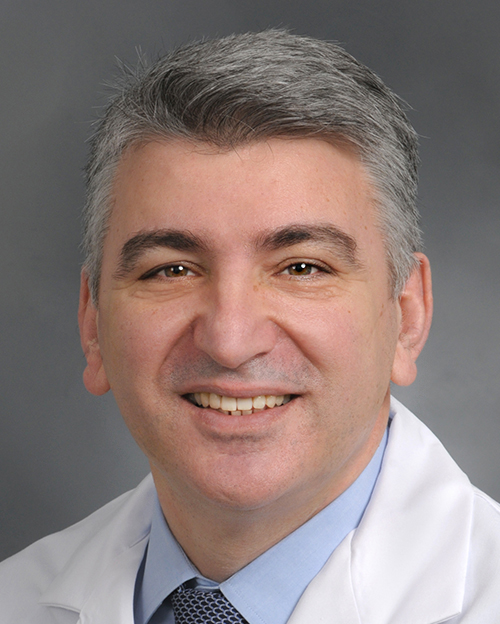 Apostolos Tassiopoulos, MD
Apostolos Tassiopoulos, MDChief, Division of Vascular Surgery
Stony Brook Medicine
Diseases of the vascular system can strike suddenly and without warning — often with deadly results. That’s why it’s best to identify and treat underlying causes before symptoms appear. To mark Women’s Heart Health Month in February, Stony Brook Medicine vascular surgeon Apostolos Tassiopoulos, MD, talks about three major vascular conditions that can jeopardize women’s health.
How does carotid artery disease affect women?
Carotid artery disease can lead to stroke, which is the number one cause of disability in older Americans. Strokes affect over 425,000 women each year — 55,000 more than men — and occur when blood flow to the brain is obstructed by plaque or a clot, or when pieces of plaque break off and flow to the brain.
Fortunately, carotid artery disease can be detected before symptoms appear with a duplex ultrasound test, and can be treated with medications in early stages. Plaque in the carotid arteries that produces symptoms or creates significant narrowing is treated with surgery (endarterectomy) or minimally invasive procedures (stents).
What are abdominal aortic aneurysms (AAAs)?
The aorta is the largest artery, delivering oxygen-rich blood to the entire body. When the wall of the aorta weakens, the pressure makes it bulge to form an aneurysm. Aneurysms can enlarge over time without symptoms and may eventually rupture, causing severe internal bleeding. More than 80 percent of patients who suffer a rupture die from this condition.
The good news is that symptomless AAAs can be found through abdominal ultrasound or CT scans and can be safely observed while treating risk factors in early stages. If the aneurysm exceeds 2.2 inches in diameter, we recommend treatment with minimally invasive endovascular stent grafts or open surgical repair.
What is peripheral artery disease (PAD)?
PAD is plaque buildup in the leg arteries that can result in leg pain, difficulty walking, non-healing foot sores and, in advanced stages, can lead to amputation. Patients with PAD frequently have plaque buildup in the coronary and carotid arteries, and are at higher risk for heart attack — the number one cause of death in women — and stroke. So identifying PAD early is important not only for improving leg health, but for reducing the risk of heart attack and stroke as well. Medications and lifestyle changes are used to treat early PAD. Those with advanced disease and symptoms that pose a threat to the limb are treated with minimally invasive interventions (stents) or open surgery.
What’s new in vascular surgery at Stony Brook?
Our Aortic Center offers specialized expertise for those with complex aortic aneurysms. Advances in minimally invasive techniques have allowed us to safely treat older patients and those with more severe disease. And, in terms of research, we are one of 80 institutions nationwide and the only on Long Island selected to participate in a double-blind clinical trial studying the restoration of blood flow to the legs through injections of bone marrow stem cells.
For more information about Stony Brook Heart Institute, call (631) 44-HEART (444-3278).

